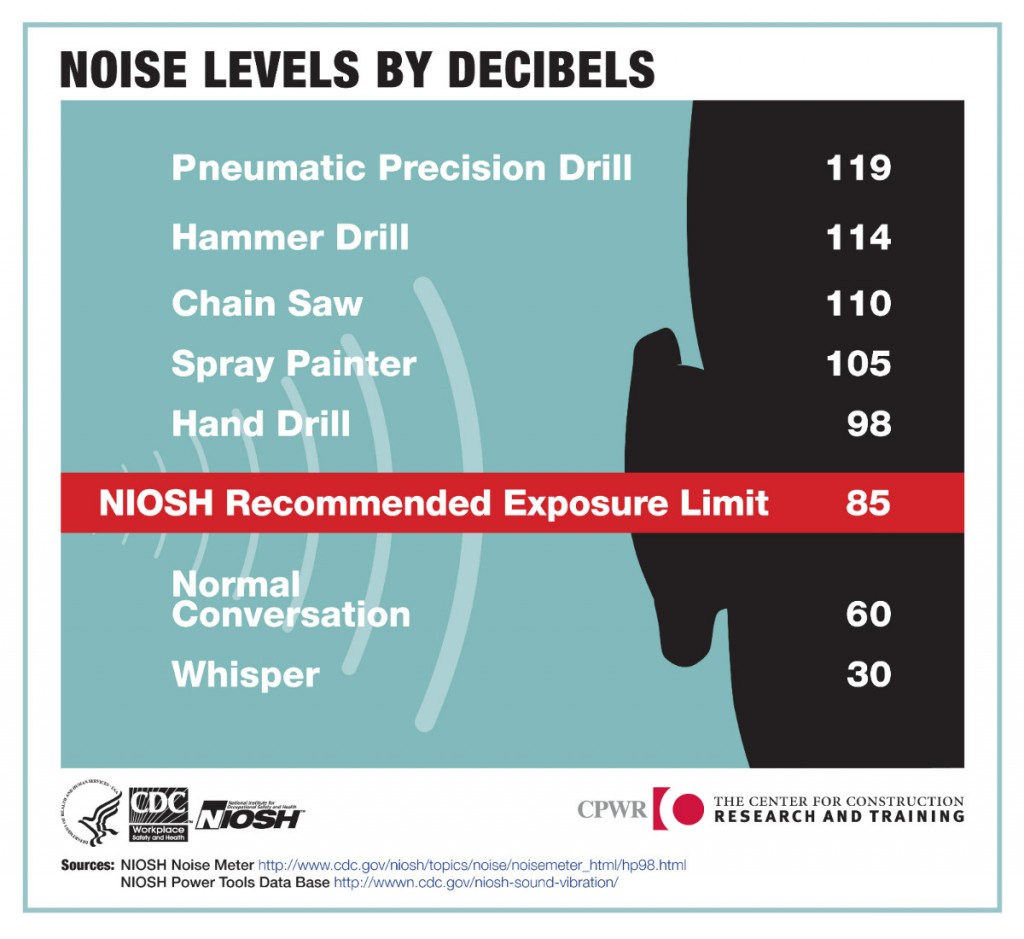Objectives
Upon completion of this lesson students should be able to:
- Identify and react to sources of noise hazards.
- Identify and react to vibration hazards.
Reading & Lecture
A noise survey should be carried out to identify areas and equipment where noise levels exceed 85 dB(A) over an 8-hour period and 140 dB peak. Regulations require all practicable steps to be taken to prevent exposure to noise above these levels and in areas where it is not practicable to reduce it, warnings should be posted up and suitable hearing protection provided. Supervision to ensure the protection equipment in used and maintained should be in place. Plant operators are most at risk and soundproofed operator cabins may be necessary to maintain safe exposure levels.
Noise in Mining Production: Types
- Impact noise from an object striking another object
- Continuous noise over a prolonged period of time
- Impulsive noise from an explosion
Hearing Loss
Temporary loss at certain sound frequencies but hearing recovers after a period of time. Can also result from a cold or ear infection.
Permanent loss
- Nerve deafness involves damage to the nerve cells of the inner ear resulting from exposure to high continuous noise levels. This damage can rarely be corrected.
- Conductive loss comes from infection, fractures or fusing of small bones, or a perforated eardrum resulting from impulsive or impact noises. Hearing is still possible, especially with the use of hearing aids.
- Long exposure to noise over 90 dB may eventually harm hearing.
- Noises over 130 dB may begin to cause pain.
Control Measures for Noise
- Engineering controls
- Mufflers
- Insulation
- Baffles
- Grease on movable parts
- Personal protection equipment.
- Ear plugs
- Reduce noise by 25-30 dB in the higher and more harmful frequencies, so that they give ample protection against sound levels of 115 to 120 dB.
- Plugs do not hinder hearing conversation in noisy surroundings. iii. Cotton is much less effective than rubber and plastic types.
- Ear muffs
- Reduce noise 35-45 dB so they provide protection against sound levels of 130-135 dB.
- Liquid – or grease – filled cushions give better noise suppression than plastic or foam rubber types.
- Combinations of plugs and muffs give an additional 3-5 dB more protection. Total noise reduction seldom exceeds 50 dB because conduction through the skull around the ear cannot be prevented.
- Ear plugs
- Methods of measurement for noise
- Dosimeter
- Sound level meter
- TLV’s
- No exposure shall exceed 115 decibels
- Impact or impulsive noises shall not exceed 140 decibels, peak sound pressure level
| Duration per day, Hours of exposure | Sound level in decibels |
|---|---|
| 8 | 90 |
| 6 | 92 |
| 4 | 95 |
| 3 | 97 |
| 2 | 100 |
| 1.5 | 102 |
| 1 | 105 |
| 0.5 | 110 |
| 0.25 or less | 115 |
Vibration
- Vibration may cause dangerous situations to develop in the form of broken welds and loose bolts but the vibration itself can also be a serious health hazard. Noise and vibration are usually connected so where there is loud noise there is likely to be a vibration hazard as well. Unexpected or excessive vibration may be an indication of an instability problem, particularly on a portable plant. Long-term contact with hand held vibrating machines such as percussion rock-drills can cause circulation damage, usually to the fingers. With continued exposure some permanent loss of feeling in the fingers may develop.
- Plant operators exposed to intense long-term vibration are at risk of developing chronic back pain and other complaints due to whole-body vibration. Vibration is generally transmitted to the body from crushing and screening plant surfaces through the feet or through seats. The structure of operating areas should be designed to minimize vibration.
